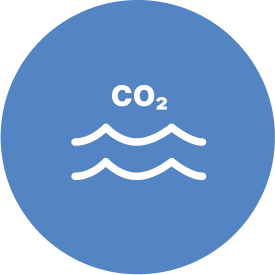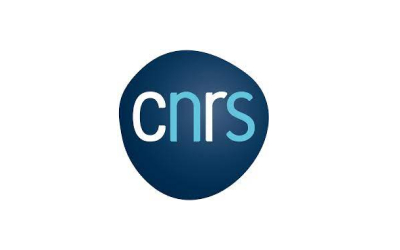Overview
The ocean plays a vital role in the global carbon cycle, capturing carbon dioxide (CO₂) through biological processes such as the biological carbon pump. Particles generated in the ocean's surface layers sink to deeper waters, transporting carbon for long-term storage. This DUC aims to improve the understanding of carbon flux in marine ecosystems through two case studies, by respectively leveraging:
- in-situ measurements and particle size distribution data to develop a comprehensive model for carbon sequestration, and
- autonomous on-site biological and optical measurements to mature carbon fluxes metrics of calcifying phytoplankton blooms in the North Atlantic.
The goal is to provide carbon flux products at global (3D/4D) and basin (1D) scales for the first and second cases, respectively. These products will inform climate change models and support ocean governance related to carbon management.
Challenge
Quantifying the amount of carbon dioxide (CO₂) stored in the ocean is currently limited by gaps in global carbon transport observations and uncertainties in existing models. These gaps arise from insufficient data on particle dynamics—such as particle size distribution and fragmentation—and on carbon fluxes linked to calcifying phytoplankton blooms, which are critical for understanding carbon export and sequestration. Without integrated and high-resolution global data, there are significant uncertainties in estimating the ocean’s ability to sequester carbon, which hinders efforts to inform climate models and ocean governance.
Solution
This DUC will provide carbon flux products at global and basin scales by combining measurements of particle size distribution (PSD) and concentration from the Underwater Vision Profiler (UVP), along with biological and optical measurements of particles composition from optical sensors—each deployed on various platforms such as gliders, BGC-Argo floats, and moorings, depending on the sensor.
The first case will create a global database of carbon flux measurements from sediment traps, thorium/uranium measurements, and other sources to validate and refine estimates of carbon export, leveraging machine learning and continuous updates from an expanding UVP dataset. The second case will develop a North Atlantic basin-scale database of carbon fluxes associated with calcifying and non-calcifying phytoplankton blooms using BGC-Argo floats and ocean colour satellite data. Case 1 solution focuses on the role of particle size on carbon flux, while case 2 targets the role of particle composition.
These products will offer high-resolution, near-real-time carbon flux models that can be used to monitor changes in ocean carbon sequestration over time and support ocean governance, particularly as new marine carbon dioxide removal (mCDR) technologies are developed.
Biological monitoring and sensor resources
- UVP observations (EcoPart), including from UVPs deployed on BGC-Argo floats. This tool provides detailed images of particles μm and zooplankton in the water column, allowing us to measure their distribution and concentration.
- Global marine environmental observations
- Other global carbon flux measurements (sediment traps, Th/U measurements)
- Bio-optical and physical variables recorded by BGC-Argo floats
Data Sources
UVP Data Availability:
- UVP PSDs and concentrations will be made available under CC BY licenses via the EcoPart application, and in the European DTO.
Environmental Data:
- World Ocean Atlas
- Copernicus Marine Service
- IFREMER
- GEBCO
- GlobColour (Global Ocean Colour Satellite data)
Benchmarking Carbon Flux Measurements (This data will be stored in a separate benchmarking database to validate carbon flux models)
- Data will be gathered from:
1. Sediment traps.
2. Thorium/Uranium (Th/U) deficit measurements.
3. Other sources obtained via database queries and literature reviews.
Main Infrastructures:
- EcoPart, which holds all particle size measurements from UVP instruments.
- Coriolis Global Data Assembly Center (GDAC): One of the key platforms delivering OneArgo global data, including UVP data, as well as bio-optical and physical variables from BGC-Argo floats.
- Global Database of Particulate Organic Carbon Flux: a database currently under development by the DUC team, which will be used to validate the model based on UVP and environmental data.
- GlobColour: A web platform that provides a wide range of ocean colour products, including particulate inorganic carbon (PIC).
Real-time Quality Control:
- UVP data quality control will be standardised between EcoPart and Coriolis GDAC.
- Quality control efforts are part of the BlueANERIS (2023–2026) and Euro-Argo-ONE (2025–2028) projects.
- Standard protocol for quality control of bio-optical and physical data collected by BGC-Argo floats.
Analysis Tools
- Machine learning algorithm (XGBOOST) to convert PSD and concentration at global scale to carbon flux and export. This code is currently developed as part of this DUC.
- MATLAB and Python libraries to process data, compute and visualise metrics of particle composition and carbon fluxes, as well as to analyse the timing of calcifying phytoplankton blooms.
Expected outputs
- Global carbon flux maps (case 1): Detailed 3D and 4D maps that show how and where carbon is stored in the ocean, helping to inform climate models. The impact of phytoplankton distribution and concentration changes on carbon sequestration will also be investigated, as well as other changes in the ocean (temperature, salinity, stratification).
- Basin-scale carbon flux visualisations (case 2): Descriptive 2D figures and maps showing particle fluxes associated with blooms of calcifying phytoplankton in the North Atlantic, highlighting how this phytoplankton type contributes to enhanced carbon sequestration
- Improved carbon export models: Enhanced models that provide more accurate estimates of carbon sequestration, supporting climate policies and ocean management.
- Better integration of observation systems to improve carbon sequestration models and to evaluate marine carbon dioxide removal (mCDR) approaches
Target Stakeholders
This DUC will be invaluable for members of the biogeochemical oceanography community working on carbon flux, ocean and deep-sea governance stakeholders, and stakeholders in marine carbon dioxide removal (mCDR) approaches.
Digital Twin Features demonstration
- Accelerate research outputs by consolidating existing measurements, and exploiting autonomous sensors (UVPs and bio-optics) to add additional carbon flux measurements to models
- Filling data gaps: The project will help identify areas where data is missing and provide more accurate tools for climate models.
Status
Ready for implementation
Leaders
- Lionel Guidi (CNRS)
- Hervé Claustre (CNRS)
- Madeleine Walker (CNRS)
- Griet Neukermans (UGent | Marsens)
- Rafael Rasse Boada (UGent | Marsens)


